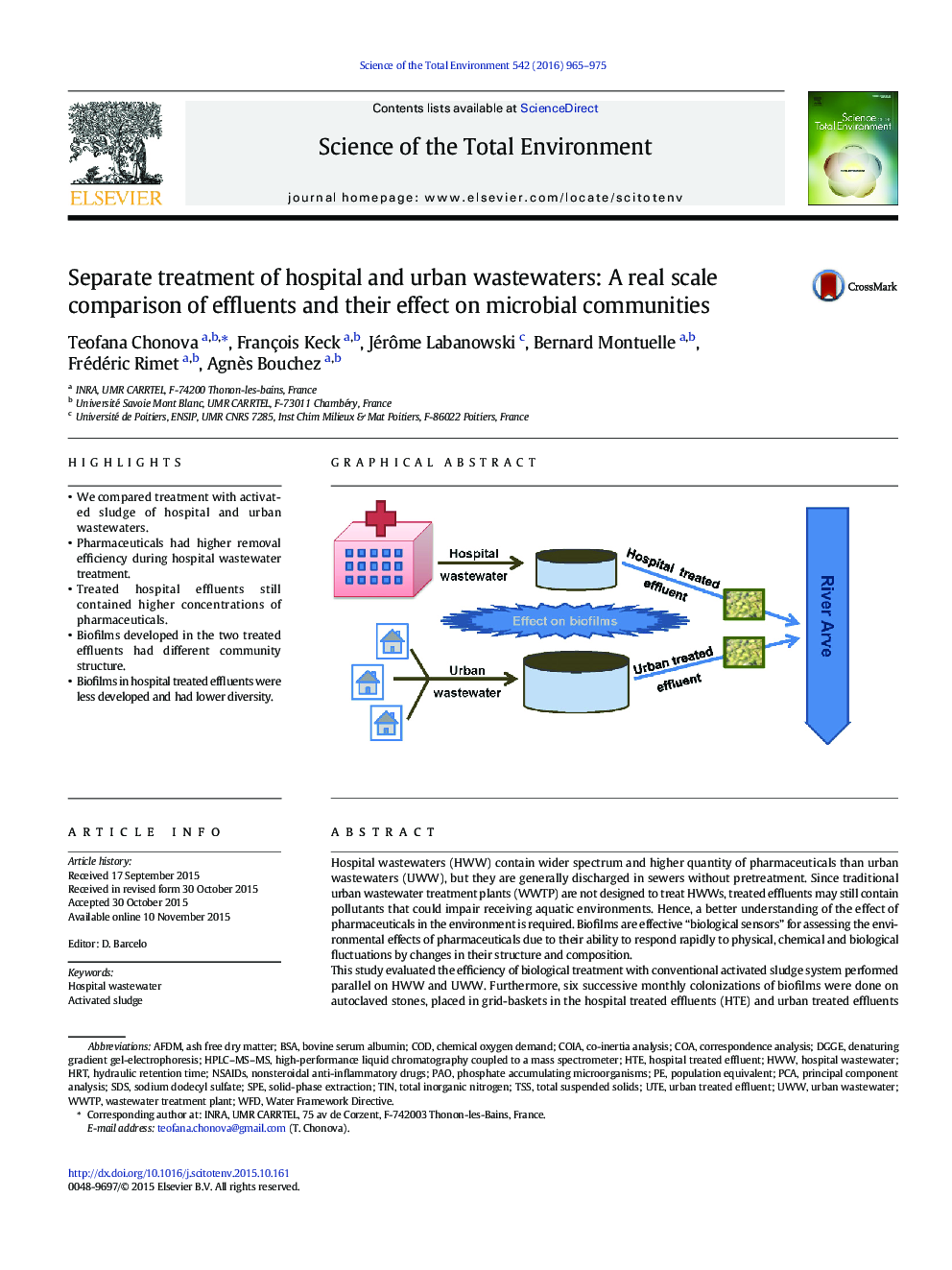| کد مقاله | کد نشریه | سال انتشار | مقاله انگلیسی | نسخه تمام متن |
|---|---|---|---|---|
| 6324957 | 1619742 | 2016 | 11 صفحه PDF | دانلود رایگان |
- We compared treatment with activated sludge of hospital and urban wastewaters.
- Pharmaceuticals had higher removal efficiency during hospital wastewater treatment.
- Treated hospital effluents still contained higher concentrations of pharmaceuticals.
- Biofilms developed in the two treated effluents had different community structure.
- Biofilms in hospital treated effluents were less developed and had lower diversity.
Hospital wastewaters (HWW) contain wider spectrum and higher quantity of pharmaceuticals than urban wastewaters (UWW), but they are generally discharged in sewers without pretreatment. Since traditional urban wastewater treatment plants (WWTP) are not designed to treat HWWs, treated effluents may still contain pollutants that could impair receiving aquatic environments. Hence, a better understanding of the effect of pharmaceuticals in the environment is required. Biofilms are effective “biological sensors” for assessing the environmental effects of pharmaceuticals due to their ability to respond rapidly to physical, chemical and biological fluctuations by changes in their structure and composition.This study evaluated the efficiency of biological treatment with conventional activated sludge system performed parallel on HWW and UWW. Furthermore, six successive monthly colonizations of biofilms were done on autoclaved stones, placed in grid-baskets in the hospital treated effluents (HTE) and urban treated effluents (UTE). The biomass of these biofilms as well as the structure and diversity of their bacterial communities were investigated.Results showed better treatment efficiency for phosphate and nitrite/nitrate during the treatment of UWW. Pharmaceuticals from all investigated therapeutic classes (beta-blockers, nonsteroidal anti-inflammatory drugs, antibiotics, analgesics and anticonvulsants) were efficiently removed, except for carbamazepine. The removal efficiency of the antibiotics, NSAIDs and beta-blockers was higher during the treatment of HWW. HTE and UTE shaped the bacterial communities in different ways. Higher concentrations of pharmaceuticals in the HTE caused adapted development of the microbial community, leading to less developed biomass and lower bacterial diversity. Seasonal changes in solar irradiance and temperature, caused changes in the community composition of biofilms in both effluents.According to the removal efficiency of pharmaceuticals, the separate treatment was beneficial. However, their high concentrations in the HTE and the following adaptations of biofilm communities identify the importance of adapting wastewater treatment to specific hospital pollutants.
214
Journal: Science of The Total Environment - Volume 542, Part A, 15 January 2016, Pages 965-975
